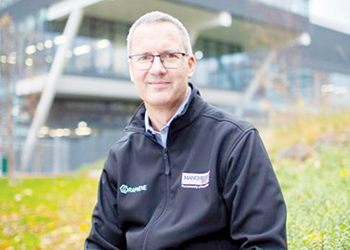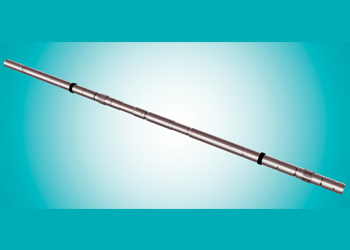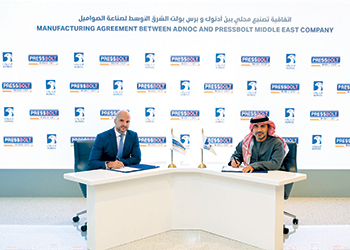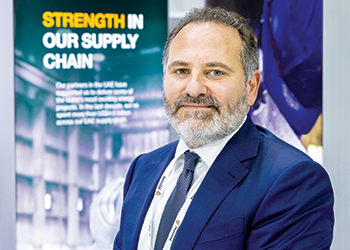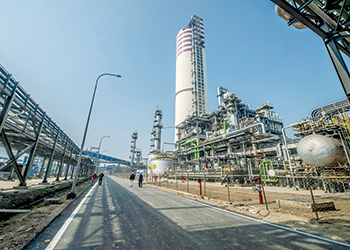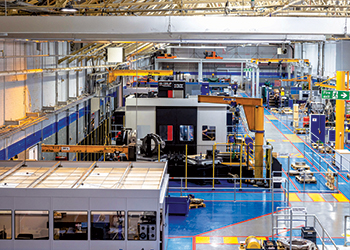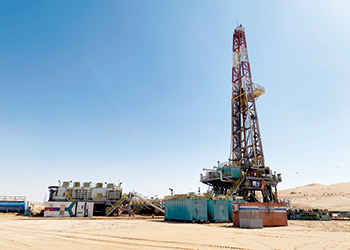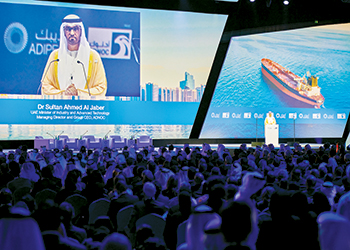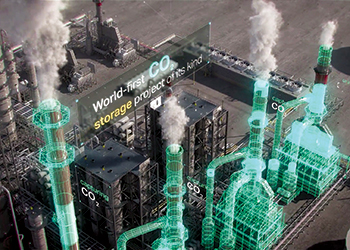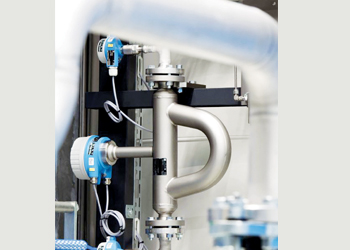
 Bruyn ... helping the downstream transition
Bruyn ... helping the downstream transition
The company effectively combines and integrates technology and lifecycle services and that is key to decarbonising the Middle East’s downstream processing industry, Leon de Bruyn, Lummus Technology CEO, tells OGN
The Middle East’s downstream industry is increasingly taking to innovation to accelerate the clean energy transition and reduce its environmental footprint.
The complexities of the challenges it faces such as digitalisation, supply chain, and evolving geopolitics also offer opportunities to create value through business model transformation, new partnerships, and new investments.
One such partner is Lummus Technology, a global leader in the development and implementation of process technologies and one of the world's most innovative technology licensing companies.
In an exclusive interview, Leon de Bruyn, CEO of Lummus Technology, explains to Abdulaziz Khattak of OGN energy magazine, how their technologies are helping regional downstream companies optimise their processes to achieve high value products with decarbonisation as the end goal.
What role can technology licensors play in the Middle East's energy transition?
First, it is important to acknowledge the ambitious and broad energy transition plans and net-zero goals in the Middle East. And when drilling down to the regional downstream operations, which is Lummus’ sector, I want to also acknowledge that some of the most visionary strategic plans for downstream assets have come out the Middle East.
 |
Siluria efficiently transforms methane into commodity petrochemicals |
These goals weigh on investment decisions and strategies, so many companies and countries throughout this region have an interest in and understand the value of cleaner and more energy efficient downstream assets.
So, as a technology licensor, Lummus’ role is to innovate and develop technologies that lower the carbon footprint of existing and new downstream facilities.
Some of the ways we achieve this is by designing more energy efficient plants that minimise feedstock consumption and reduce waste. More drastic and positive impacts are created by step-out technology solutions that we develop such as crude-to-chemicals.
We also offer solutions that fit the various stages of an asset’s operating cycle, such as reducing or eliminating the carbon footprint of heaters, extending the life of catalysts and employing digital solutions for optimised performance.
Effectively combining and integrating technology and lifecycle services is key to decarbonise the downstream processing industry in the Middle East.
How much savings in capex and opex can Lummus’ technology offer regional customers?
Every operation, both in size and scope, is different, so the potential savings can vary from facility to facility. Our technologies can help optimise the energy used, lower feedstock use or increase net output of desired end products. In addition, we help diversify feedstocks and products towards better value add. These outcomes positively affect one’s capex and opex position while lowering their carbon footprints, which translate into direct economical and sustainability benefits.
In your opinion, how are the needs of the Middle East refiners different from their global counterparts?
What we see is Middle East refiners–being export-oriented with local crude supply–can benefit from integration into downstream petrochemicals production and from global trade flows, allowing for better hydrocarbon usage and value add at lower overall carbon footprints.
At the refinery process technology level, they want and need the same solutions to enhance efficiencies, reduce waste and emission outputs, and save money where possible. Ultimately, sustainable growth and better economics are the vision.
Do you see the Middle East moving from traditional crude production to more downstream activity? What does Lummus offer in this domain?
Yes, we see a more comprehensive approach where crude production and refining are more integrated with downstream production of higher value-add products. Examples are crude-to-chemicals, aimed at a more efficient route to polyolefins and other petrochemicals. These commodities have higher value than traditional refinery products.
With our technology we can convert lower value molecules into higher value products.
Lummus is very active in crude-to-chemicals, and through our partnership with Saudi Aramco Technologies Company (a wholly owned subsidiary of Aramco) and Chevron Lummus Global (CLG), we offer a wide range of technologies to produce targeted polymers.
Tell us a bit about Lummus' portfolio expansion in the near-term?
The drive for sustainability, energy transition and the desire to do better with less cost and waste has afforded us opportunities to grow our offering of technologies both organically as well as through acquisitions and partnerships.
Recent examples include Lummus’ net-zero ethane cracker, which is the result of our relentless pursuit of technology innovation.
This a breakthrough technology and the industry’s first of its kind that will help downstream producers decarbonise a process in petrochemical manufacturing that is very carbon intensive.
We have also leveraged key partnerships to drive expansion. Combining forces with Brazil’s Braskem, the largest biopolymer producer in the world, Lummus is delivering a commercial green ethylene that will accelerate development of chemicals and plastics made from bioethanol, a renewable feedstock.
We are also collaborating with Synthos, a leader in the global synthetic rubber market, to develop a biobutadiene technology that economically processes biobased feedstocks to more sustainable synthetic rubbers.
An example of expanding our portfolio through acquisition is Siluria. This technology transforms methane – one of the most abundant, inexpensive and widely available hydrocarbons in the world – into commodity petrochemicals in an efficient and scalable manner. Siluria can be seamlessly integrated into existing infrastructure and help reduce emissions for producers.
How does Lummus’ net-zero ethane cracker cut emissions? What is the science behind the technology?
This game-changing innovation, which has been commercialised, can be deployed for new ethane crackers, and used to upgrade and decarbonise existing crackers.
Our net-zero technology cuts emissions through the elimination of methane or other fuels.
We have radically reimagined the cracking heater and process design. This has resulted in enhanced heater efficiency, improvements in the product recovery section and a shift to electric drivers on the major compressors.
Late last year, Lummus announced the first commercial deployment of its licensed TC2C crude-to-chemicals technology in South Korea. What are the lessons learnt so far?
The announcement of the first commercial deployment of TC2CTM was the result of collaboration over several years between Lummus, Saudi Aramco and CLG.
The TC2C will revolutionise petrochemical production and like with any breakthrough, we learned many valuable lessons.
We learned the need to break the traditional mindset of separate refining and petrochemicals complexes, which allowed for the deployment of a novel, integrated process scheme to meet new objectives.
We adopted an approach free of traditional refinery evolution, opening the door for technological solutions to maximise chemicals yield from crude while simultaneously reducing capex, opex and carbon footprint.
We also realised that the application of crude-to-chemicals technology must go beyond typical condensate and light crude feedstocks.
Finally, breakthrough technologies take a significant amount of R&D. And while this may be obvious, it is still worth recognising the impressive R&D efforts by Saudi Aramco, CLG and Lummus.
We leveraged the world-class R&D capabilities of each partner to focus on time to market, innovating the technology and enhancing project execution.
How can the world be fair to developing economies, who are faced with the dual challenge of energy transition and increasing energy demand at home?
This is an important question and a balance we must find between growing energy demands, while at the same time, transitioning to cleaner, more sustainable energy solutions.
This requires a comprehensive approach, which includes providing access to finance and low-interest loans, investing in clean energy projects and technology, expanding clean energy to rural areas, improving energy efficiency in new and existing infrastructure, and better collaboration between developed and developing economies.
Ultimately, ensuring fairness in the global transition to cleaner, more sustainable energy requires coordinated efforts from governments, industries and businesses, the international community, and a host of other stakeholders.










































































